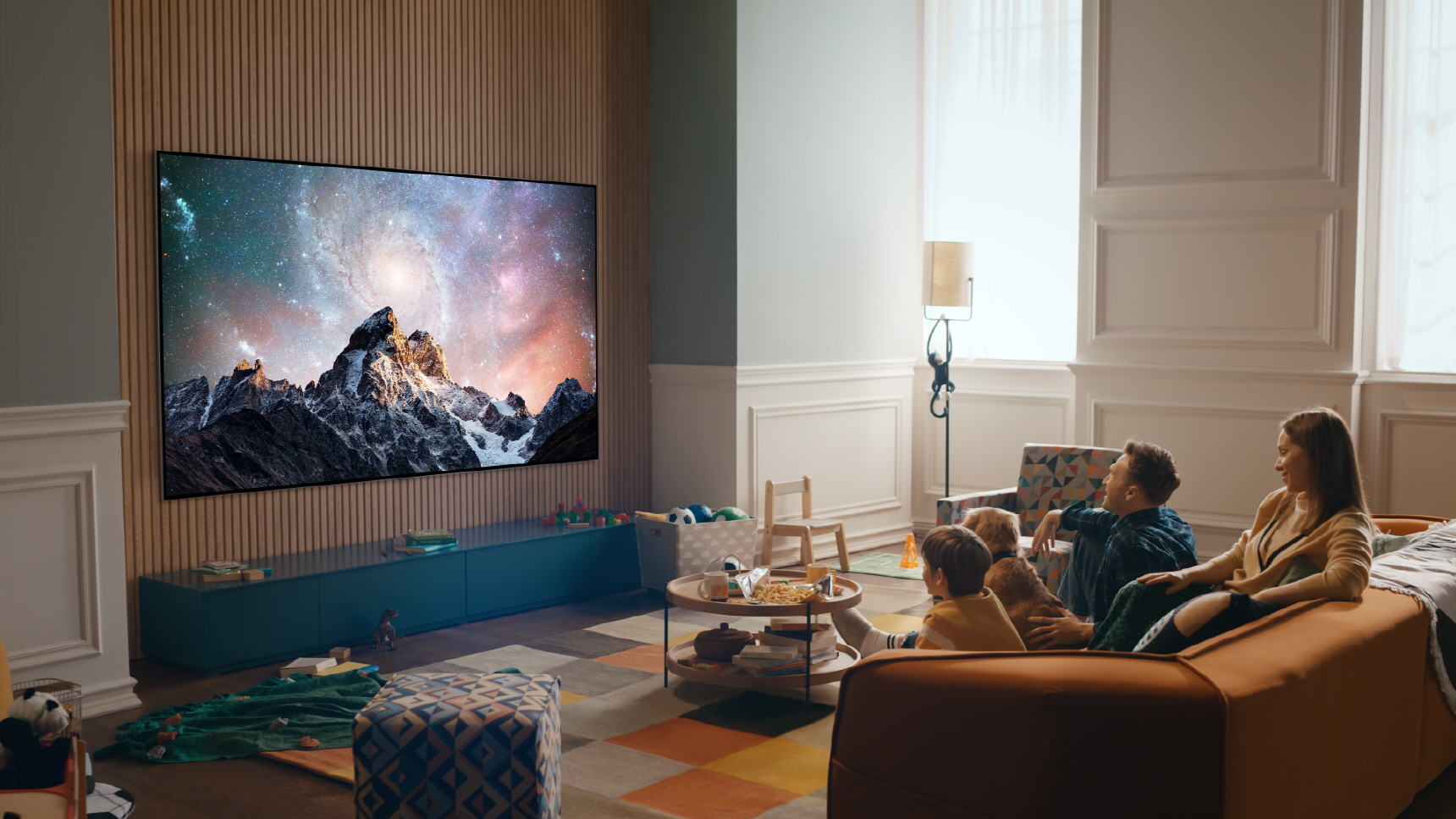This breakthrough means that much brighter OLED TVs could be on the way
Blue OLEDs to revolutionise the TV market in 2024?

The next generation of OLED TVs could be significantly brighter thanks to US firm Universal Display Company, which claims to have solved a 20-year-old puzzle – how to mass-produce blue phosphorescent material.
You see, today's best OLED TVs are forced to use two types of emitting material: phosphorescent (for red and green light) and fluorescent (for blue). The problem is that fluorescent material is highly inefficient – only about 25 per cent of the power ends up as light.
Using red, green and blue phosphorescent material has always been the goal as it could deliver up to 100 per cent efficiency, but refining and commercialising the tech has proven to be impossible... until now (via flatpanelshd).
"UDC expects to meet the target specifications for phosphorescent blue by the end of the year", said Mike Hack, Vice President of Universal Display, according to Korean newspaper ETNews.
If so, UDC, which currently supplies TV titans such as LG and Samsung, could begin shipping blue 'PHOLED' materials in early 2024. And since TV makers tend to launch their flagship models in March/April, we could find ourselves reviewing the first ever blue PHOLED TV by late 2024.
UDC has not disclosed how the breakthrough came about, and questions remain as to the lifespan of blue PHOLED panels. Still, it looks as though the future of TV is increasingly bright.
In the meantime, LG Display is making moves of its own. Earlier this year, it emerged that the Korean giant is aiming to boost the brightness of its OLED TVs by 20 per cent using micro lens tech – a thin transparent layer containing thousands of tiny lenses that can be added to existing OLED panels. The technology is tipped to find its way into TV sets as soon as 2023 and could be a major talking point at January's CES 2023.
Get the What Hi-Fi? Newsletter
The latest hi-fi, home cinema and tech news, reviews, buying advice and deals, direct to your inbox.
MORE
Read our LG OLED65G2 review: LG's finest OLED TV yet
Shop today's best TV deals
QD-OLED TV: everything you need to know about the game-changing new TV tech
Tom is a journalist, copywriter and content designer based in the UK. He has written articles for T3, ShortList, The Sun, The Mail on Sunday, The Daily Telegraph, Elle Deco, The Sunday Times, Men's Health, Mr Porter, Oracle and many more (including What Hi-Fi?). His specialities include mobile technology, electric vehicles and video streaming.
